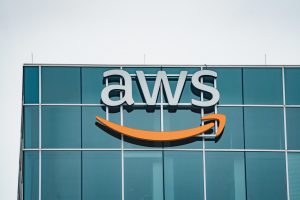HP exec tells why many users are still stuck in low gear with OpenStack | #HPDiscover
![]() Hundreds of organizations have implemented OpenStack in their environments over the last few years, but that doesn’t mean OpenStack is mature. In fact, most projects are still stuck in the pilot stage, creating a massive consulting opportunity that HP is eager to seize, according to Tom Norton, who leads HP’s OpenStack services group,.
Hundreds of organizations have implemented OpenStack in their environments over the last few years, but that doesn’t mean OpenStack is mature. In fact, most projects are still stuck in the pilot stage, creating a massive consulting opportunity that HP is eager to seize, according to Tom Norton, who leads HP’s OpenStack services group,.
In most recent appearance on theCUBE at the HP Discover conference in Barcelona, Norton shared his firsthand view of enterprise adoption with hosts John Furrier and Dave Vellante. While maturity rates vary, most customers “are still looking at [OpenStack] for a singular workload or looking for an environments that supports a test case,” he detailed, pointing to the complexity involved in scaling the framework to production size.
Norton ticked off some of the obstacles to wider deployment. One is meeting service level requirements and enforcing security, both of which necessitate a fair amount of tinkering, since many of the components that make up OpenStack are not yet fully ready for commercial use.
There are also sticky issues to address outside of the data center. The open nature of the OpenStack platform theoretically makes it possible to extend on-premise environments with public cloud resources to form an integrated hybrid whole that combines the best of both worlds, allowing the user to keep sensitive workloads in-house while taking advantage of outside services. But Norton noted numerous hurdles to realizing that vision in practice, beginning with strict regulatory limitations on what kind of data organizations are allowed to trust to a third party provider in different jurisdictions.
Even if a company can legally move a certain type of information beyond the firewall, they may still have to keep it within the local jurisdiction, which makes it difficult to reach global markets and limits the choice of cloud vendors. And that’s not to mention the complexity of linking on- and off-premise infrastructure in a stable manner.
Organizations are finding success with their pilot implementations, but piecing together that big picture of the open-source hybrid cloud is proving to be beyond the reach of most. “A lot of the development work is being done at a usable scale, a testable scale, but that migration to an enterprise-grade version is” difficult, the executive explained.
That’s where HP hopes to come in with its OpenStack cloud and professional services, which are aimed at enabling customers to chain together the different building blocks needed to meet their requirements. “One credit card swipe doesn’t necessarily give you everything you need for your business; you may have to go to two or three different places to get exactly what you’re looking for,” Norton said. The vendor offers to help CIOs “broker” that process, he said.
Watch the full interview (21:30)
A message from John Furrier, co-founder of SiliconANGLE:
Your vote of support is important to us and it helps us keep the content FREE.
One click below supports our mission to provide free, deep, and relevant content.
Join our community on YouTube
Join the community that includes more than 15,000 #CubeAlumni experts, including Amazon.com CEO Andy Jassy, Dell Technologies founder and CEO Michael Dell, Intel CEO Pat Gelsinger, and many more luminaries and experts.
THANK YOU









